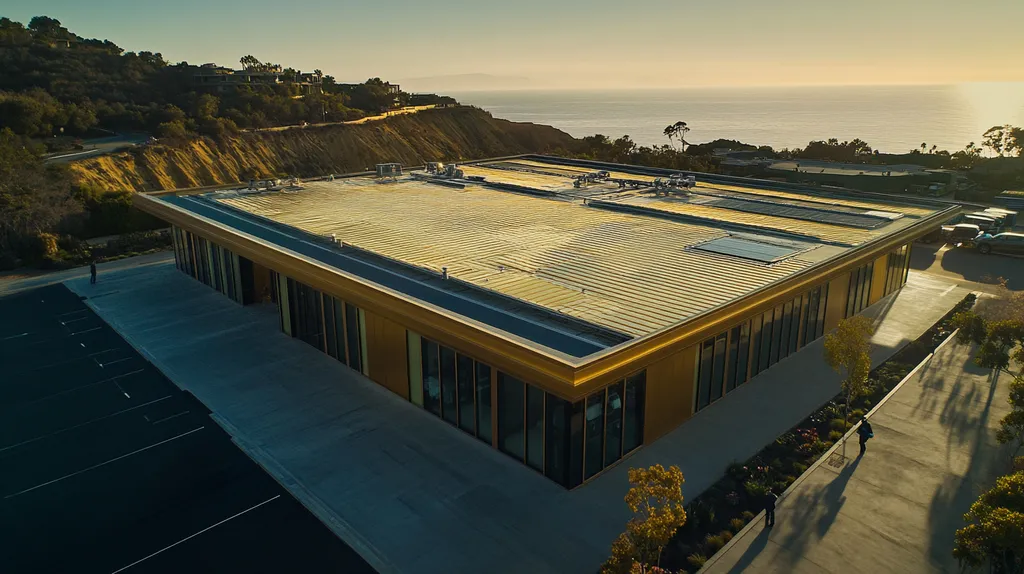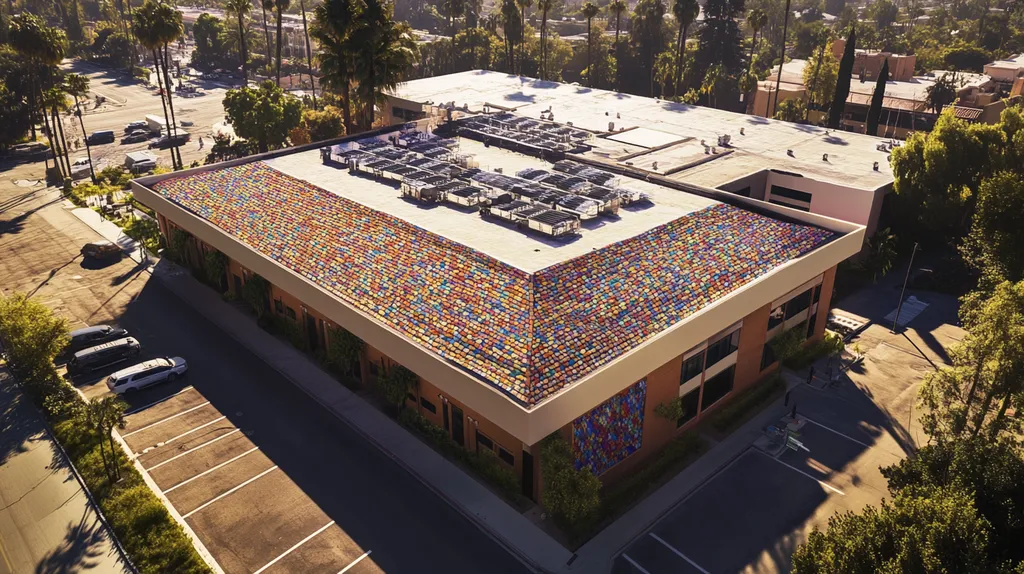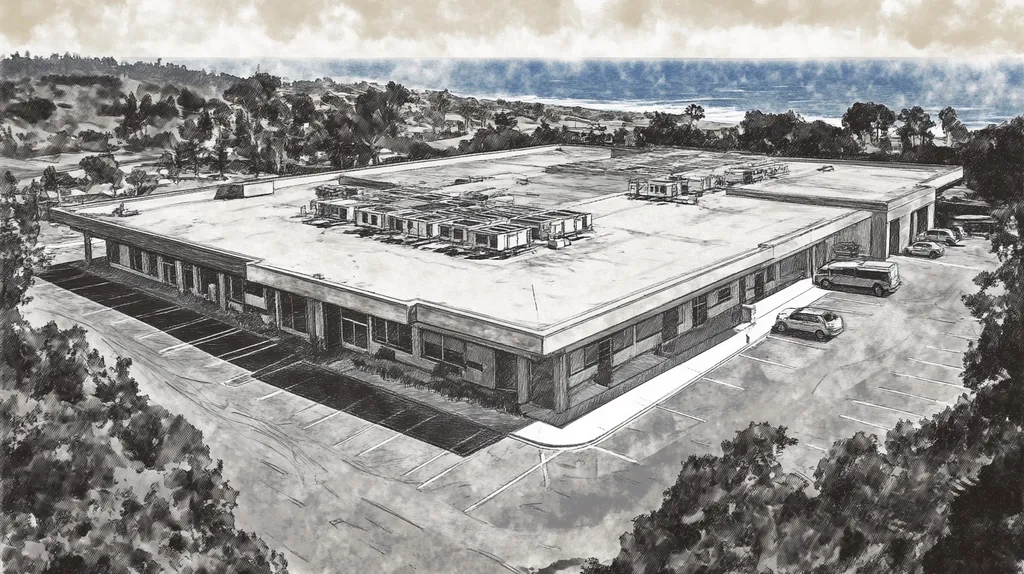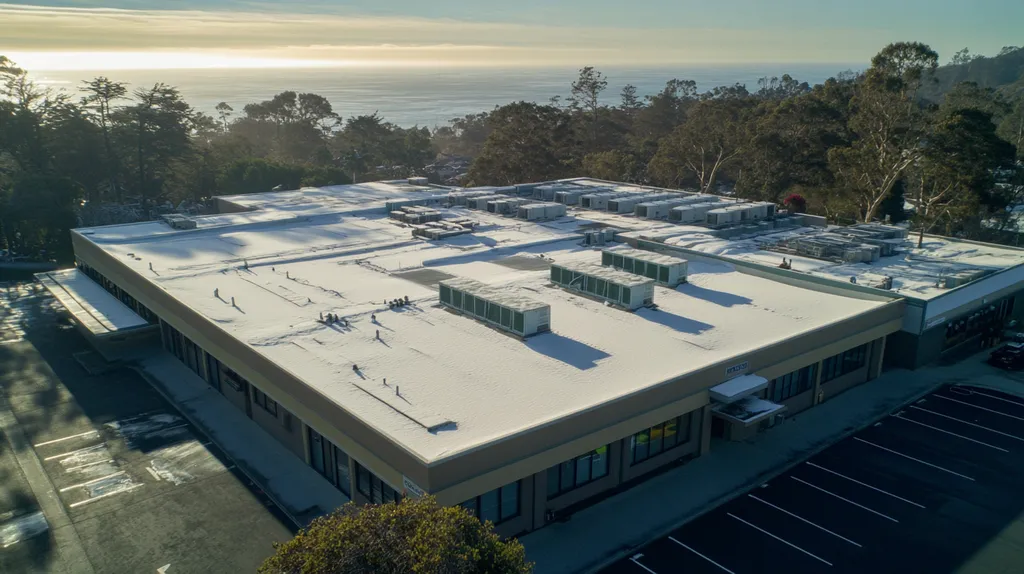Commercial roof leaks cost U.S. businesses over $5 billion annually in repairs, lost productivity, and damaged inventory. Despite this staggering figure, many facility managers continue to rely on outdated repair methods that fail to address underlying structural issues.
Industry data reveals that 85% of commercial roof failures occur due to poor maintenance practices and inadequate repair techniques. These systemic problems often lead to repeated leaks, escalating costs, and premature roof replacement.
This analysis examines why traditional repair approaches fall short while exploring evidence-based solutions that can dramatically improve commercial roof performance and longevity.
SECTION 1: CURRENT PRACTICES
Commercial roof leaks present serious financial challenges for property owners and facility managers. Industry statistics reveal that ignoring water damage can result in repair costs soaring into the tens of thousands of dollars. Many facilities also face productivity losses due to unexpected leaks, underscoring the urgent need for effective repair solutions. This section delves into the common repair methods used today, the drawbacks of temporary patching techniques, and the standard inspection procedures prevalent in the industry.
Common Repair Methods
For commercial roof leaks, common repair methods often focus on quick fixes. Many contractors utilize adhesives or liquid membranes to seal visible cracks and holes. While these methods can provide prompt relief, they frequently overlook the root causes of leaks.
This band-aid approach can result in recurring problems, as it fails to address underlying issues like inadequate drainage or membrane deterioration. Consequently, businesses may face a cycle of leaks and mounting repair costs.
Beyond immediate repair expenses, facilities risk long-term structural damage that can diminish property value. A thorough assessment of the roof’s condition is essential to pinpoint the true sources of leaks and enable effective repairs.
Understanding these common methods is crucial for facility managers who want to make informed decisions about their roofing systems.
Temporary Patching Techniques
Temporary patching techniques have become the go-to solution for urgent repairs in the roofing industry. Often, materials like tar or specialized sealants are used to bridge gaps until a permanent solution can be implemented. However, this strategy can be risky.
Although it appears cost-effective initially, temporary patches often fail under stress or adverse weather conditions. This can lead to leaks reappearing and further expenses sooner than expected. Facilities relying solely on these quick fixes frequently find themselves facing compounded damage over time.
The implications extend beyond financial concerns; persistent leaks can contribute to health hazards like mold growth, jeopardizing the safety of building occupants. While these temporary solutions may be useful in emergencies, they leave commercial roofs vulnerable over time.
Property owners must adopt a more comprehensive strategy, moving beyond these short-lived patching methods.
Standard Inspection Procedures
Standard inspection procedures for commercial roofs generally consist of routine biannual reviews. These inspections aim to spot visible signs of damage, such as tears or pooling water. However, they often lack depth and overlook underlying issues.
Inspectors may miss critical areas where problems can develop, including joints and flashing. This limited scope can result in undetected water intrusion, leading to extensive damage before the next scheduled inspection. Relying solely on visual assessments can create a false sense of security for property managers.
Moreover, standard inspections may not tailor their approach to the unique characteristics of each building, leading to generic solutions that fail to address specific roofing needs. Incorporating advanced technologies like infrared scanning into inspection protocols could offer a much more accurate evaluation of roof health.
Modernizing inspection methods is crucial for ensuring the durability and resilience of commercial roofs. By improving inspection practices, property owners can significantly reduce the costly consequences associated with leaks.
SECTION 2: SYSTEMIC ISSUES
Leaking roofs can result in severe financial losses and structural damage for commercial properties. The National Roofing Contractors Association (NRCA) identifies improper maintenance as a primary cause of roof failures. Property owners must confront systemic issues related to maintenance practices, material selections, and contractor training. Ignoring these factors not only prolongs leaks but also escalates repair costs. This section explores these critical issues and highlights why current practices often fall short.
Inadequate Maintenance Schedules
Regular maintenance is essential for extending a roof’s lifespan and preventing costly leaks. However, many property owners overlook this vital process. Skipping scheduled inspections can turn minor issues into major concerns, resulting in unexpected damage.
For example, if seasonal weather events expose existing vulnerabilities without routine checks, small cracks may evolve into significant leaks. This could lead to interior water damage and mold growth, threatening both the building and its occupants.
Often, property owners neglect maintenance schedules due to budget constraints or misprioritization. This shortsightedness can culminate in substantial repair bills that diminish overall property value.
Experts recommend conducting roof assessments at least twice a year. Adopting stronger maintenance practices can help identify potential problems early, allowing for proactive rather than reactive measures.
Subpar Material Selection
The materials chosen for roofing projects have a profound impact on their longevity and performance. Unfortunately, some projects give in to the temptation of cost-effective, lower-quality options. While these choices may appear economical upfront, they frequently lead to significant headaches down the road.
Using inferior membranes may cut costs initially, but such materials are generally more prone to wear and tear. They can also fail prematurely, particularly during harsh weather conditions, leading to leaks and other damage.
Investing in high-quality materials, on the other hand, typically results in better warranties and long-lasting performance. Property owners who prioritize quality materials can reduce long-term repair frequency and minimize ongoing maintenance expenses.
Selecting appropriate materials that align with regional climate conditions is crucial. Consulting with experienced roofing professionals can ensure that material choices meet industry standards for durability and reliability.
Insufficient Training for Contractors
The expertise and training of roofing contractors significantly influence the quality and longevity of installations. Unfortunately, not all contractors receive adequate training in the latest techniques and materials, creating a worrying knowledge gap.
Roof leaks are much more likely when installations are performed incorrectly. If contractors are unfamiliar with best practices, even top-notch materials won’t perform as intended.
Continuing education is essential for contractors to stay current on new methods and technologies. Many leaks result from outdated practices that could be easily avoided with proper training.
Industry associations stress the importance of ongoing contractor education. Property owners must prioritize hiring well-trained professionals to protect their investments and ensure the integrity of their roofing systems.
SECTION 3: MISSED OPPORTUNITIES
Property owners often overlook proactive measures for maintaining commercial roofs, which can lead to substantial financial burdens. A staggering 80% of commercial roofing failures are attributed to inadequate maintenance. Ignoring these critical issues sets the stage for costly repairs, structural damage, and a decrease in productivity. This section highlights three vital areas where property owners and facility managers can enhance their approach, ultimately minimizing the risk of leaks and substantial damages.
Overlooking Preventive Maintenance
Preventive maintenance plays a crucial role in extending a commercial roof’s lifespan. Regular inspections provide an opportunity to identify potential problem areas before they escalate into leaks. Without a structured maintenance schedule, minor issues can spiral into costly emergencies.
The National Roofing Contractors Association reports that proper maintenance can extend a roof’s lifespan by an impressive 30%. This investment not only safeguards the roofing system but also offers peace of mind to property owners.
Many property managers mistakenly view maintenance as an avoidable expense instead of a strategic investment. Neglecting routine inspections can lead to unexpected water damage, which often proves more expensive to address than proactive roof management.
By instituting a preventive maintenance program, property owners can ultimately save money and improve the reliability of their roofing systems. This proactive stance is essential for protecting their property investments.
Ignoring Early Warning Signs
Failing to act on early warning signs can dramatically increase the risk of severe damage. Common indicators like water spots or blistering should prompt immediate investigation, as timely action could prevent an emergency situation from arising.
Research indicates that addressing issues early can reduce repair costs by as much as 50%. Property managers should be trained to identify these signs as part of a comprehensive risk management strategy.
Unfortunately, many decision-makers dismiss visible issues as minor, which can lead to catastrophic outcomes, including potential structural failure.
To combat this mindset, property owners must prioritize active monitoring of their roofing systems. By creating a culture that values early intervention, businesses can protect their properties from the hidden costs associated with neglect.
Neglecting Advanced Technologies
Advanced roofing technologies provide promising solutions for leak detection and prevention. Tools like thermal imaging and drone inspections offer insights that traditional methods cannot match. Overlooking these advancements leaves roofs susceptible to unseen damages.
Investing in modern technologies can significantly enhance leak detection accuracy. For instance, thermal imaging can identify moisture issues behind roofing materials before leaks manifest.
Despite the advent of these innovations, many property managers continue to rely on outdated inspection techniques. This dependence can result in oversights that prolong exposure to leaks and other costly problems.
Incorporating advanced technologies into routine inspections marks a critical evolution in effective roof management. Embracing these modern solutions not only leads to cost savings but also improves the peace of mind for property owners.
SECTION 4: ROOT CAUSES
Identifying the root causes of leaks in commercial roofs is essential for property owners. Neglecting these issues can lead to hefty repair bills and major disruptions. Industry research shows that leaks are among the top maintenance challenges, often causing broader damage and financial strain. This section examines three primary causes: age and material degradation, poor installation practices, and weather-related damage.
Age and Material Degradation
As roofing systems age, their materials begin to lose effectiveness. Every roofing material has a specific lifespan; for instance, TPO and EPDM membranes typically last around 20 years. After this period, the likelihood of unexpected failures and leaks escalates.
Over time, factors such as UV exposure, thermal cycling, and moisture can weaken the structural integrity of materials. This degradation not only increases the risk of leaks but can also lead to higher energy costs due to diminished insulation. If left unaddressed, these issues can result in costly repairs and significant safety concerns.
To avert such pitfalls, regular inspections are critical for spotting early signs of material deterioration. Property owners should schedule professional evaluations to identify problems before they worsen. By committing to a proactive maintenance strategy, they can considerably extend their roof’s lifespan.
Choosing the right materials from the outset is also crucial. High-quality, durable roofing materials can significantly reduce the adverse effects of aging, ensuring the roof remains functional and leak-free for years to come.
Poor Installation Practices
Improper installation poses serious risks to the integrity of commercial roofs. Mistakes during installation, such as inadequate sealing and misalignment, can create weak points where water can infiltrate the building.
Research indicates that nearly 70% of roof-related problems stem from installation errors, highlighting the importance of hiring qualified professionals who adhere to industry best practices. By selecting experienced contractors, property owners can enhance the longevity of their roofing systems.
Furthermore, poorly executed installations often lead to frequent maintenance and repair needs, which can escalate costs. Savvy property owners understand that investing in skilled labor is key to avoiding future expenses and ensuring lasting reliability.
Obtaining detailed inspections and certifications after installation is also a best practice. This not only helps confirm the roof’s integrity but also holds contractors accountable for their workmanship, providing peace of mind for property owners.
Weather-Related Damage
Weather-related damage presents a constant challenge for commercial roofs. Elements like high winds, heavy snowfall, and intense heat can severely undermine roofing materials. Extreme weather events can exacerbate existing vulnerabilities, making leaks more probable.
For example, wind-driven rain can penetrate even the smallest cracks, leading to significant water intrusion. Property owners in regions prone to severe weather should consider local patterns when selecting roofing materials, opting for options that can withstand specific climatic challenges.
Additionally, implementing preventive measures such as regular maintenance and effective drainage systems can help reduce weather-related risks. Roofs that are poorly maintained may experience ponding after storms, which accelerates wear and can lead to leaks.
A comprehensive understanding of local weather profiles is vital for property owners. By investing in appropriate roofing materials and maintaining a rigorous upkeep routine, they can greatly minimize the impact of adverse weather conditions on their roofs.
DATA DRIVEN EVIDENCE
Recognizing the statistical landscape of commercial roof leaks is essential for property owners. Research indicates that nearly 40% of all leaks stem from faulty installation practices, highlighting the urgent need to tackle underlying issues rather than just applying temporary fixes. When repairs are delayed, financial repercussions can be dire; estimates suggest costs can rise by up to 50% if leaks are left unattended for as little as six months. This section presents compelling data and case studies that challenge the viability of traditional repair methods.
Statistical Analysis of Leak Sources
Data from recent roofing surveys reveals that the majority of leaks arise from two primary culprits: poor installation and lack of effective maintenance. A staggering 60% of leaks are linked to mistakes made during the initial installation, including inadequate sealing and improper material choices. Furthermore, the absence of regular inspections can worsen the situation, as minor vulnerabilities often go unnoticed until they evolve into serious leaks.
Geographical factors also impact leak prevalence. Facilities situated in regions known for heavy rainfall or snowfall report 30% more leaks than those in drier areas. By understanding these risk factors, property owners can proactively prioritize maintenance and repair efforts. Armed with data, they can make informed decisions that significantly improve their roofing systems’ reliability.
This statistical analysis not only uncovers weaknesses in current roofing practices but also serves as a clarion call for property owners. Investing in quality materials and better training for installation teams can drastically lower the incidence of leaks, empowering facility managers to take decisive action in their roofing strategies.
Cost Implications of Delayed Repairs
Postponing roof repairs can dramatically inflate overall costs. Experts estimate that every month a leak remains unfixed can generate an additional $1,500 in damage. This includes potential water damage to interiors, mold remediation costs, and inventory losses. Moreover, the financial toll can extend beyond immediate repairs, affecting property valuations and insurance premiums.
As time passes, unrepaired leaks can lead to increasingly severe structural damage. A seemingly harmless leak can result in rotting wood, compromised insulation, and damage to electrical systems, all of which contribute to escalating repair costs that quickly outstrip initial estimates.
The urgency of addressing these delays highlights the importance of both timely repairs and ongoing maintenance. By acting decisively, property owners can prevent a cycle of rising expenses and preserve the long-term integrity of their buildings.
Case Studies of Failed Repairs
Numerous case studies illustrate the limitations of traditional repair methods in resolving commercial roof leaks. In one instance, a property owner attempted to fix a recurring leak with a quick patch, ignoring the underlying problems. This short-sighted approach ultimately led to a larger water intrusion issue, resulting in a costly full roof replacement within two years that exceeded $200,000.
Another case involved a warehouse that suffered from multiple leaks due to inadequate drainage systems. Initial repair efforts were focused on sealing visible cracks, neglecting the systemic drainage problem. This reactive strategy led to more extensive damage and further financial burdens, showcasing how failed repairs often lead to a cycle of neglect and greater costs.
These examples underline the critical need for comprehensive assessments prior to undertaking repairs. Transitioning to systemic solutions rather than temporary fixes is essential for avoiding recurring issues and minimizing unexpected expenses. Property owners and facility managers are encouraged to rethink their repair strategies in favor of sustainable, long-term solutions.
SECTION 6: ALTERNATIVE SOLUTIONS
As commercial buildings age, the risks and costs associated with roofing leaks become increasingly significant. These leaks can result in extensive interior damage, structural issues, and considerable financial losses. Alarmingly, studies suggest that nearly 40% of roof leaks are not effectively resolved with traditional methods, underscoring the urgent need for innovative solutions. This section explores advanced techniques, materials, and proactive maintenance practices that can more effectively tackle these pressing challenges.
Advanced Sealant and Coating Options
Conventional sealants may dry out and crack, diminishing their effectiveness against leaks. In contrast, advanced polymer-based sealants provide superior flexibility and durability, enabling them to withstand extreme weather conditions and maintain their integrity for a longer duration.
Additionally, liquid-applied roofing coatings create a strong barrier against moisture penetration. By applying a thicker layer, property owners can effectively prevent leaks while also enhancing the roof’s lifespan with UV protection, which reduces the frequency of necessary repairs.
Investing in these advanced sealant options not only mitigates leaks but also contributes to energy efficiency by reflecting heat and lowering cooling costs. With their multiple benefits, property owners can make informed choices that safeguard their assets and promote sustainability.
Embracing new sealant technologies can redefine leak prevention strategies for commercial roofs, ensuring improved performance and extended longevity.
Regular Roof Inspections and Maintenance
Roof leaks often develop from wear and damage that goes unnoticed over time. Conducting regular inspections can help detect these issues early on, preventing them from escalating into larger, more costly problems. Experts recommend scheduling inspections at least twice a year, particularly after significant weather events, to identify potential vulnerabilities.
Implementing a proactive maintenance program enables facility managers to keep roofs in optimal condition. Simple measures, like clearing debris and promptly repairing minor punctures, can help avert extensive renovations in the future. Regular maintenance has been shown to extend roof lifespans by as much as 30%.
A well-structured maintenance schedule not only safeguards against leaks but also prepares properties for changes in weather patterns and extreme conditions. By prioritizing inspections, owners can save money in the long run while ensuring the safety and integrity of their buildings.
Creating a culture of routine roofing care can significantly reduce the need for emergency repairs, fostering a sustainable approach to building management.
Innovative Repair Materials and Techniques
The roofing industry is consistently evolving, introducing new repair materials and techniques that enhance leak resolution effectiveness. For example, thermoplastic polyolefin (TPO) patches serve as a robust solution for small to medium leaks, bonding seamlessly with existing roofing membranes for a reliable repair.
Another innovative approach involves leveraging drone technology for inspections and repairs. Drones can quickly detect weak spots and apply repairs in hard-to-access areas, minimizing disruption to daily operations. This method not only expedites the repair process but also enhances safety for maintenance teams.
Additionally, integrating infrared technology can assist in locating hidden leaks by identifying temperature differentials within roofing materials. This proactive strategy allows facility managers to address moisture issues before they escalate into severe damage.
By embracing these innovative repair solutions, facility managers can manage leak challenges with greater efficiency and confidence. The adoption of advanced methods will lead to a significant reduction in recurring leaks and associated costs.
Moving Forward
The commercial roofing industry faces a critical inflection point, with outdated repair methods costing businesses over $5 billion annually in preventable damage.
Traditional approaches to leak repair continue to fall short, with 85% of commercial roof failures stemming from inadequate maintenance and subpar repair techniques.
The evidence clearly demonstrates that embracing advanced technologies, implementing rigorous maintenance schedules, and investing in quality materials can reduce repair costs by up to 50% while extending roof lifespans by 30%.
For property owners and facility managers, the path forward requires abandoning quick fixes in favor of comprehensive, data-driven solutions that address root causes rather than symptoms.
The future of commercial roofing depends on this fundamental shift from reactive repairs to proactive maintenance and innovative technologies.
FREQUENTLY ASKED QUESTIONS
Q. What are the common repair methods for leaks on a commercial roof?
A. Common repair methods often involve adhesives or liquid membranes to seal visible problems. While these provide temporary relief, they usually ignore underlying issues, resulting in recurring leaks. A thorough assessment should be a priority to address the root causes effectively.
Q. How does inadequate maintenance lead to industrial roof leaks?
A. Neglecting maintenance schedules allows minor issues to escalate into significant leaks. Seasonal weather can exacerbate these vulnerabilities, leading to costly interior damage. Regular assessments are essential for identifying problems early, ultimately extending the roof’s lifespan.
Q. Why is early detection critical for commercial roof issues?
A. Addressing early warning signs of leaks can reduce repair costs significantly. Timely intervention prevents minor issues from developing into costly emergencies, safeguarding the building’s integrity. A proactive monitoring strategy is vital to minimize long-term expenses.
Q. What role do weather conditions play in industrial roof leaks?
A. Weather-related damage is a significant factor, as harsh conditions can exacerbate existing vulnerabilities. Rain, wind, and snow can lead to severe water intrusion, particularly if roofs are poorly maintained. For this reason, choosing durable materials aligned with climate conditions is important.
Q. How can property owners make informed decisions about roofing repairs?
A. Property owners should invest in thorough inspections and understand the root causes of leaks. By analyzing data and employing advanced repair techniques, they can make informed decisions. Collaborating with experienced professionals further enhances the effectiveness of repairs and maintenance strategies.
Q. What innovative materials are available for commercial roof repairs?
A. Advanced polymer-based sealants and liquid-applied coatings are effective for leak prevention. They provide better flexibility and durability compared to traditional options. These materials also help enhance the roof’s longevity and energy efficiency while reducing repair frequency.
Q. How can routine inspection schedules benefit commercial roofs?
A. Implementing regular inspections allows property owners to identify vulnerabilities early. Proactive maintenance can extend the roof’s lifespan and mitigate costly repairs down the line. A systematic approach ensures that minor issues are addressed before escalating into severe problems.











